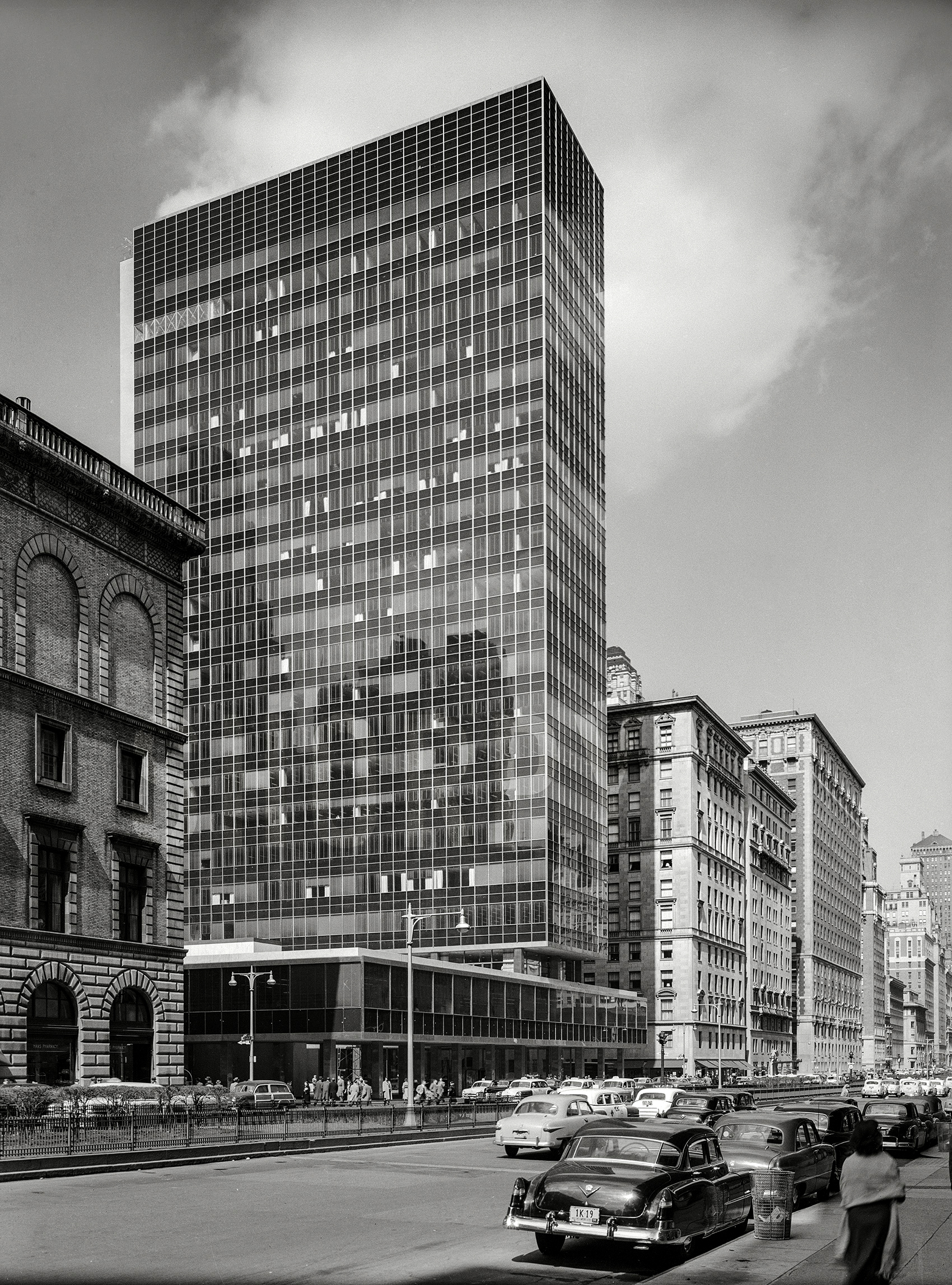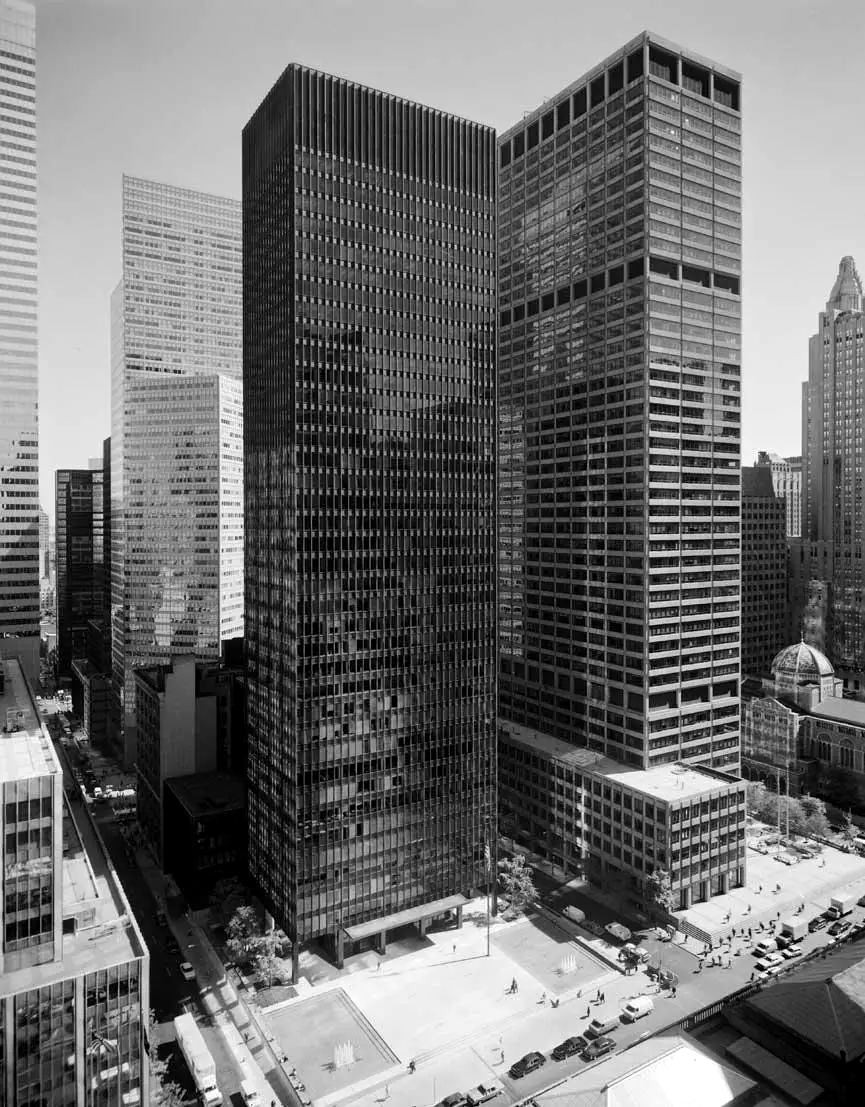What is the International Style?
“Ornament is a crime, truth to materials, form follows function”
The International Style’s credo was a call for simplification, honesty and clarity.
Emerging in the mid-twentieth century, the International Style transformed architecture forever. A completely new way of designing buildings, the new movement’s practitioners emphasized volume, light and simplicity instead of mass, materials and frills.
While the International Style’s roots can be traced back to the 1920s, the movement really came into full force in North America during the Post-War period. Slab-like and prismatic skyscrapers of glass, concrete and steel flourished in the ensuing construction boom, as cities rapidly intensified to accommodate for the continent’s population growth and urbanization. The International Style architects also took advantage of newly available or recently perfected construction techniques— like “curtain wall” window systems— that allowed tall buildings to assume these new, lighter forms and reach dizzying new heights.
Lever House and the Seagram Building, two early, International-Style skyscrapers in New York City, were enormously influential on the rest of the movement. Coincidentally or not, they’re located across the street from each other on Park Ave.

LEVER HOUSE
Completed in 1952, Lever House, designed by Gordon Bunshaft rose to 21 stories and was among the first buildings in New York to have a glass curtain-wall facade. It’s also remarkable for its two-part, mixed-use design: a slender office tower sitting atop a low-rise, horizontal commercial plaza.

SEAGRAM BUILDING
Given a blank cheque by Bronfman heiress Phyllis Lambert, Ludwig Mies van der Rohe designed the 38-story Seagram Building and upon completion in 1958 it became the most expensive skyscraper of the time. Here the glass curtain-wall façade is interrupted by structural elements that the architect exposed: the horizontal I-beams of the steel frame structure. Combined with the vertical steel mullions securing the window panes, these metallic elements make up the gridwork that became a signature element of the many International Style skyscraper facades that were to follow.